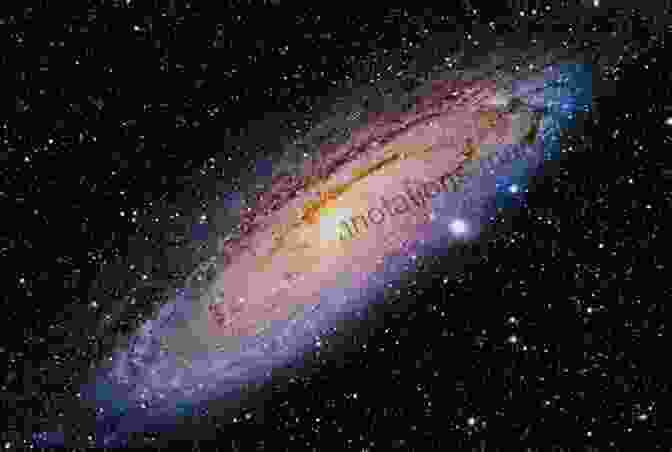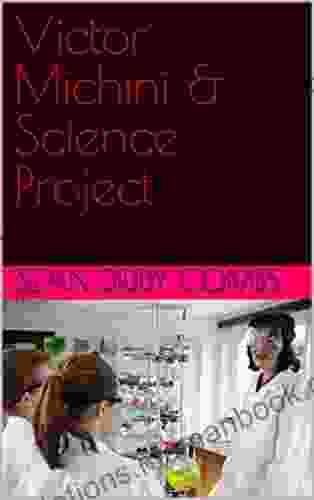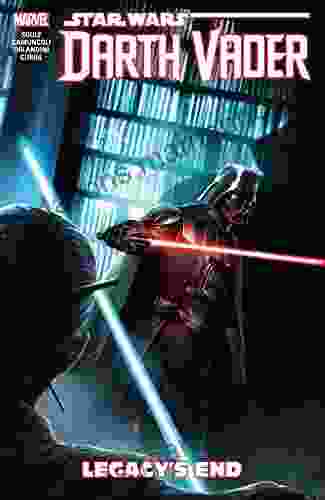An Illustrated Guide to the Wonders of the Universe

The universe is a vast and mysterious place, full of wonders that we are only beginning to understand. This illustrated guide will take you on a journey through the cosmos, from the vastness of space to the intricacies of the atom.
4.3 out of 5
| Language | : | English |
| File size | : | 24066 KB |
| Text-to-Speech | : | Enabled |
| Screen Reader | : | Supported |
| Enhanced typesetting | : | Enabled |
| X-Ray | : | Enabled |
| Word Wise | : | Enabled |
| Print length | : | 239 pages |
| Lending | : | Enabled |
The Solar System
Our solar system is a small part of the Milky Way galaxy. It consists of the Sun, eight planets, dwarf planets, and countless moons, asteroids, and comets.
- The Sun is a star, a giant ball of hot gas that emits light and heat. It is the center of our solar system and the source of all life on Earth.
- Mercury is the closest planet to the Sun. It is a small, rocky planet with a thin atmosphere.
- Venus is the second planet from the Sun. It is a hot, dry planet with a thick atmosphere.
- Earth is the third planet from the Sun. It is a blue planet with a thin atmosphere and abundant water.
- Mars is the fourth planet from the Sun. It is a red planet with a thin atmosphere and two moons.
- Jupiter is the fifth planet from the Sun. It is a giant planet with a thick atmosphere and a large number of moons.
- Saturn is the sixth planet from the Sun. It is a giant planet with a thick atmosphere and a beautiful ring system.
- Uranus is the seventh planet from the Sun. It is a giant planet with a thick atmosphere and a ring system.
- Neptune is the eighth planet from the Sun. It is a giant planet with a thick atmosphere and a ring system.
Stars are giant balls of hot gas that emit light and heat. They are the building blocks of galaxies and the sources of energy for life on Earth.
- The Sun is a star.
- The stars in the night sky are all part of the Milky Way galaxy.
- Stars vary in size, mass, and temperature. The largest stars are supergiants, while the smallest stars are red dwarfs.
- Stars are born in nebulae, clouds of gas and dust.
- Stars eventually die, and their remains can become white dwarfs, neutron stars, or black holes.
Galaxies
Galaxies are vast collections of stars, gas, and dust. They are the largest structures in the universe.
- The Milky Way galaxy is a spiral galaxy. It contains about 200 billion stars.
- There are billions of galaxies in the universe. Some galaxies are small and irregular, while others are large and spiral.
- Galaxies are moving away from each other. The farther away a galaxy is, the faster it is moving away.
- The universe is expanding. This means that the galaxies are getting farther and farther apart.
Black Holes
Black holes are regions of spacetime where gravity is so strong that nothing, not even light, can escape. They are formed when massive stars collapse at the end of their lives.
- Black holes are invisible. They can only be detected by their gravitational effects.
- Black holes have a singularity, a point of infinite density and gravity.
- Black holes can merge with other black holes. When two black holes merge, they release a tremendous amount of energy.
- Black holes are thought to be common in the universe. They may even be at the center of most galaxies.
Nebulae
Nebulae are clouds of gas and dust. They are the birthplaces of stars.
- There are many different types of nebulae. Some nebulae are bright and colorful, while others are dark and dusty.
- Nebulae are often found in the spiral arms of galaxies.
- Nebulae are the raw material for star formation. When a nebula collapses, it can form a new star.
- Nebulae are beautiful objects. They are often photographed by astronomers and space enthusiasts.
Supernovae
Supernovae are the explosions of massive stars. They are the brightest objects in the universe.
- Supernovae can be seen from across the universe.
- Supernovae release a tremendous amount of energy. This energy can be used to create new stars and planets.
- Supernovae are thought to be responsible for the creation of the heavy elements in the universe.
- Supernovae are beautiful objects. They are often photographed by astronomers and space enthusiasts.
Cosmic Microwave Background
The cosmic microwave background (CMB) is the leftover radiation from the Big Bang, the event that created the universe. The CMB is a faint glow that fills the entire universe.
- The CMB is the oldest light in the universe. It was emitted about 380,000 years after the Big Bang.
- The CMB is a valuable tool for astronomers. It can be used to study the early universe and the evolution of galaxies.
- The CMB is a beautiful object. It is a reminder of the birth of the universe.
Dark Matter and Dark Energy
Dark matter and dark energy are two mysterious components of the universe. Dark matter is thought to make up about 27% of the universe, while dark energy is thought to make up about 68%. We do not know what dark matter and dark energy are, but they are thought to play an important role in the evolution of the universe.
- Dark matter is invisible. It does not emit or reflect light.
- Dark matter is thought to be made up of particles that do not interact with normal matter.
- Dark matter is thought to be clumped together in halos around galaxies.
- Dark energy is a mysterious force that is causing the universe to expand at an accelerating rate.
- Dark energy is thought to make up about 68% of the universe.
The universe is a vast and mysterious place. We are only beginning to understand the wonders that it contains. This illustrated guide has taken you on a journey through the cosmos, from the vastness of space to the intricacies of the atom. We hope that you have enjoyed this journey and that you have learned something new about the universe.
4.3 out of 5
| Language | : | English |
| File size | : | 24066 KB |
| Text-to-Speech | : | Enabled |
| Screen Reader | : | Supported |
| Enhanced typesetting | : | Enabled |
| X-Ray | : | Enabled |
| Word Wise | : | Enabled |
| Print length | : | 239 pages |
| Lending | : | Enabled |
Do you want to contribute by writing guest posts on this blog?
Please contact us and send us a resume of previous articles that you have written.
 Top Book
Top Book Novel
Novel Fiction
Fiction Nonfiction
Nonfiction Literature
Literature Paperback
Paperback Hardcover
Hardcover E-book
E-book Audiobook
Audiobook Bestseller
Bestseller Classic
Classic Mystery
Mystery Thriller
Thriller Romance
Romance Fantasy
Fantasy Science Fiction
Science Fiction Biography
Biography Memoir
Memoir Autobiography
Autobiography Poetry
Poetry Drama
Drama Historical Fiction
Historical Fiction Self-help
Self-help Young Adult
Young Adult Childrens Books
Childrens Books Graphic Novel
Graphic Novel Anthology
Anthology Series
Series Encyclopedia
Encyclopedia Reference
Reference Guidebook
Guidebook Textbook
Textbook Workbook
Workbook Journal
Journal Diary
Diary Manuscript
Manuscript Folio
Folio Pulp Fiction
Pulp Fiction Short Stories
Short Stories Fairy Tales
Fairy Tales Fables
Fables Mythology
Mythology Philosophy
Philosophy Religion
Religion Spirituality
Spirituality Essays
Essays Critique
Critique Commentary
Commentary Glossary
Glossary Bibliography
Bibliography Index
Index Table of Contents
Table of Contents Preface
Preface Introduction
Introduction Foreword
Foreword Afterword
Afterword Appendices
Appendices Annotations
Annotations Footnotes
Footnotes Epilogue
Epilogue Prologue
Prologue Wynn Anne Rossi
Wynn Anne Rossi George Monbiot
George Monbiot Bruce Weinstein
Bruce Weinstein Tibullus
Tibullus Felipe Fernandez Armesto
Felipe Fernandez Armesto Robert Griffith
Robert Griffith Debbie Lacy
Debbie Lacy Crystal Daniels
Crystal Daniels David Schmittou
David Schmittou Adrian Edward
Adrian Edward Frances Itani
Frances Itani Mary Rose Quigg
Mary Rose Quigg Houghton Mifflin Harcourt
Houghton Mifflin Harcourt David Sinclair
David Sinclair Trisha Maynard
Trisha Maynard Abraham Lincoln
Abraham Lincoln Shelly Shaffer
Shelly Shaffer Craig Wear
Craig Wear Brendan Gregg
Brendan Gregg Joan Cohen Jones
Joan Cohen Jones
Light bulbAdvertise smarter! Our strategic ad space ensures maximum exposure. Reserve your spot today!
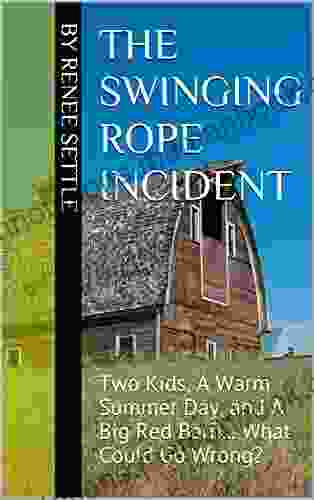
 Christian CarterThe Swinging Rope Incident and Other Stories: Unveiling the Secrets of...
Christian CarterThe Swinging Rope Incident and Other Stories: Unveiling the Secrets of... Guillermo BlairFollow ·7.7k
Guillermo BlairFollow ·7.7k Colt SimmonsFollow ·12.9k
Colt SimmonsFollow ·12.9k Rudyard KiplingFollow ·4.3k
Rudyard KiplingFollow ·4.3k Brayden ReedFollow ·14.5k
Brayden ReedFollow ·14.5k Xavier BellFollow ·8.7k
Xavier BellFollow ·8.7k Jacques BellFollow ·16.5k
Jacques BellFollow ·16.5k Emilio CoxFollow ·7.9k
Emilio CoxFollow ·7.9k Jim CoxFollow ·9.6k
Jim CoxFollow ·9.6k

 Nick Turner
Nick TurnerBeethoven's Early Chamber Music: A Listening Guide
Ludwig van Beethoven's early...

 Clarence Mitchell
Clarence MitchellJam Yahtzee Croshaw: The Enigma Behind the Beloved Board...
In the realm of board games, where dice roll...

 F. Scott Fitzgerald
F. Scott FitzgeraldTeacher Research on Language and Literacy: Practitioner...
In an ever-evolving educational landscape,...

 Alec Hayes
Alec HayesThe New Leadership Challenge: Creating the Future of...
The nursing profession is facing a number of...
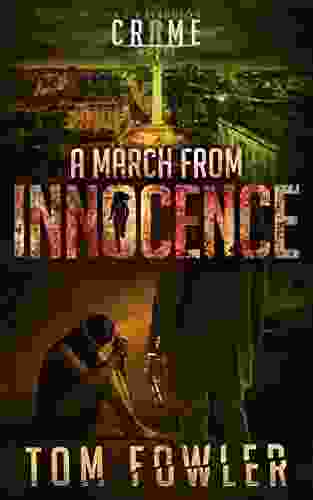
 Felix Hayes
Felix HayesPrepare for Intrigue and Suspense: A Comprehensive Dive...
Step into the captivating world...
4.3 out of 5
| Language | : | English |
| File size | : | 24066 KB |
| Text-to-Speech | : | Enabled |
| Screen Reader | : | Supported |
| Enhanced typesetting | : | Enabled |
| X-Ray | : | Enabled |
| Word Wise | : | Enabled |
| Print length | : | 239 pages |
| Lending | : | Enabled |



